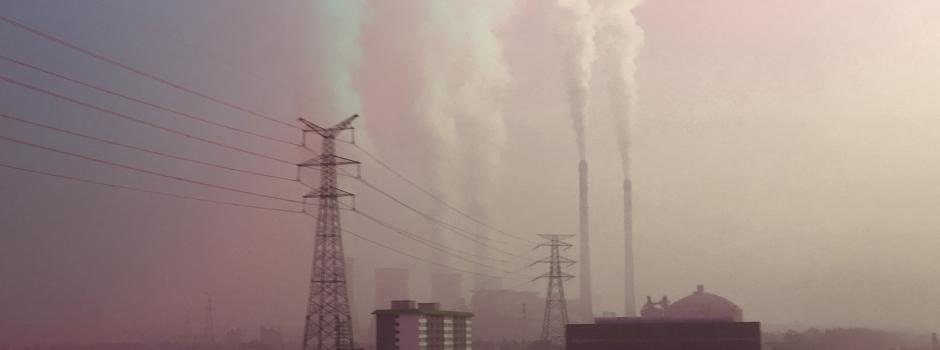Over the past several years, the Chinese government has been implementing stringent policies to curb air pollution. To what extent are those policies effective? Now, an innovative study co-authored by Zhang Shuang, assistant professor of economics at NYU Shanghai, proclaims that China is making independently verifiable progress in reducing sulfur dioxide from coal power plants.
The paper, titled Quantifying Coal Power Plant Responses to Tighter SO2 Emissions Standards in China, was published in Proceedings of the National Academy of Sciences (PNAS) on June 18.
The study evaluated the impact of China’s new air pollution standards on emissions of sulfur dioxide (SO2), a pollutant associated with respiratory illnesses, by comparing newly available data recorded by the plant-level Continuous Emissions Monitoring Systems (CEMS) with data collected from a satellite of the US National Aeronautics and Space Administration (NASA).
 “We observed large reductions in the concentration of sulfur dioxide (SO2) from coal power plants in China following the implementation of a tougher national air emissions standard starting in July 2014. We also found a corresponding decline in SO2 measures in satellite observations,” said Zhang.
“We observed large reductions in the concentration of sulfur dioxide (SO2) from coal power plants in China following the implementation of a tougher national air emissions standard starting in July 2014. We also found a corresponding decline in SO2 measures in satellite observations,” said Zhang.
The research, led by Zhang, was jointly conducted by Valerie Karplus, an assistant professor at the MIT Sloan School of Management, and Douglas Almond, a professor in the School of International and Public Affairs and the Department of Economics at Columbia University.
With the policy in place, the researchers found that overall, the CEMS-recorded concentration of SO2 emissions at coal power plants fell by 13.9 percent. However, there has been conspicuous regional differences in the reduction, depending on the stringency level of the new standard.
Intriguingly, post-policy reductions in CEMS and satellite measurements correspond closely in “non-key” regions, where the maximum allowable concentration of sulfur dioxide was lowered from 400 milligrams per cubic meter to 200 milligrams per cubic meter.
But in heavily polluted and populated “key” regions, where the limit was placed at 50 milligrams per cubic meter, the research found weaker corresponding evidence.
“Many plants in key regions constrained largely by the vintage of installed equipment, required substantial changes to their pollution removal technology or operational practices to meet the tighter standards. Despite a large drop in SO2 emissions concentrations, many firms ultimately fell short,” Zhang said.
In addition to outlining the uplifting progress, the new study also prescribes a couple of policy lessons for China’s air pollution control efforts. Zhang said an important first step involves clarifying reporting requirements and improving the accuracy and reliability of the data.
“Remote sensing data from the satellite, for example, should be used as an independent check on the numbers that authorities are getting from the emitters,” Zhang said. “Governments could also provide compliance flexibility to emitters to comply with tougher standards with the help of emissions trading systems.”


